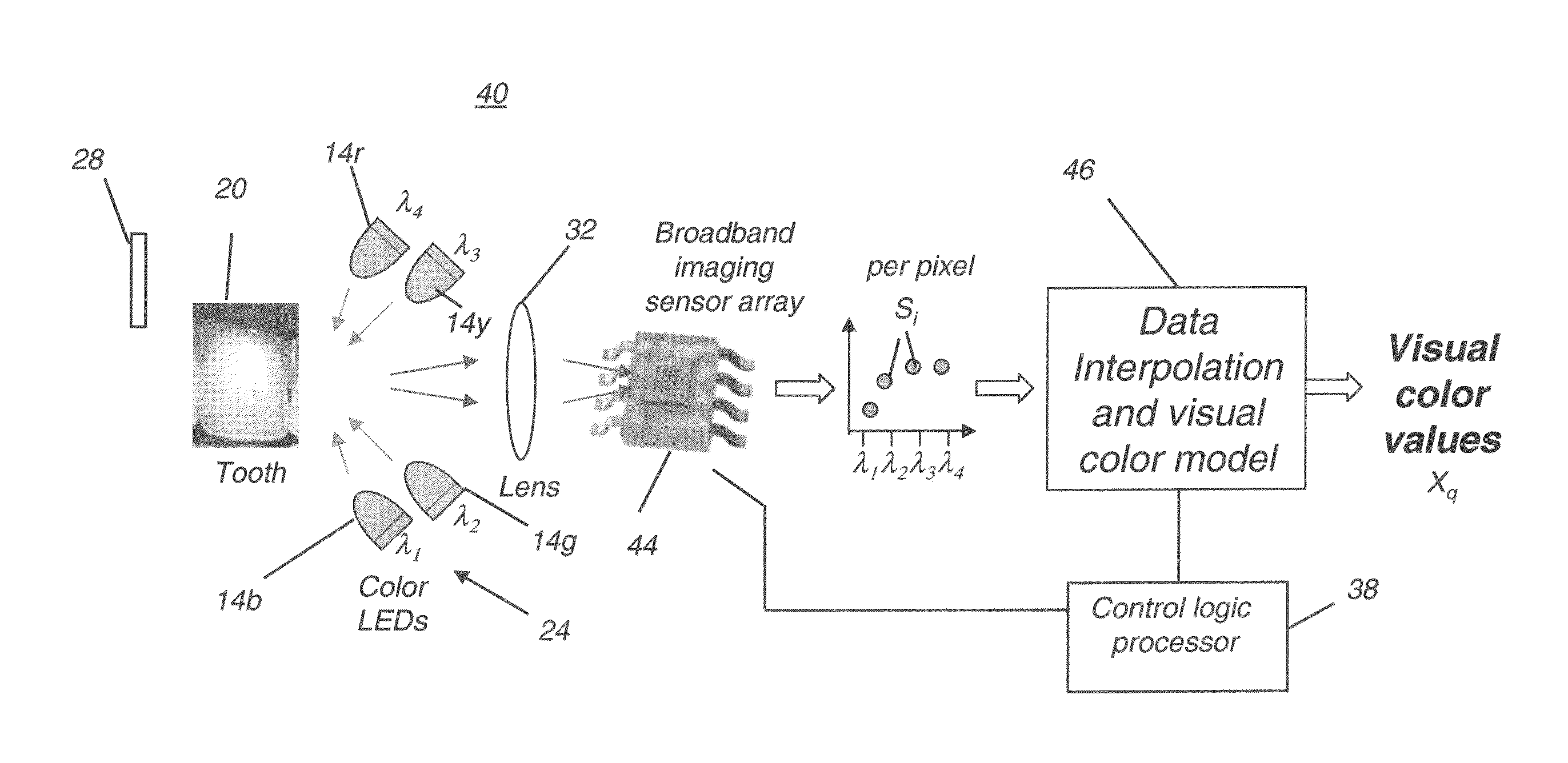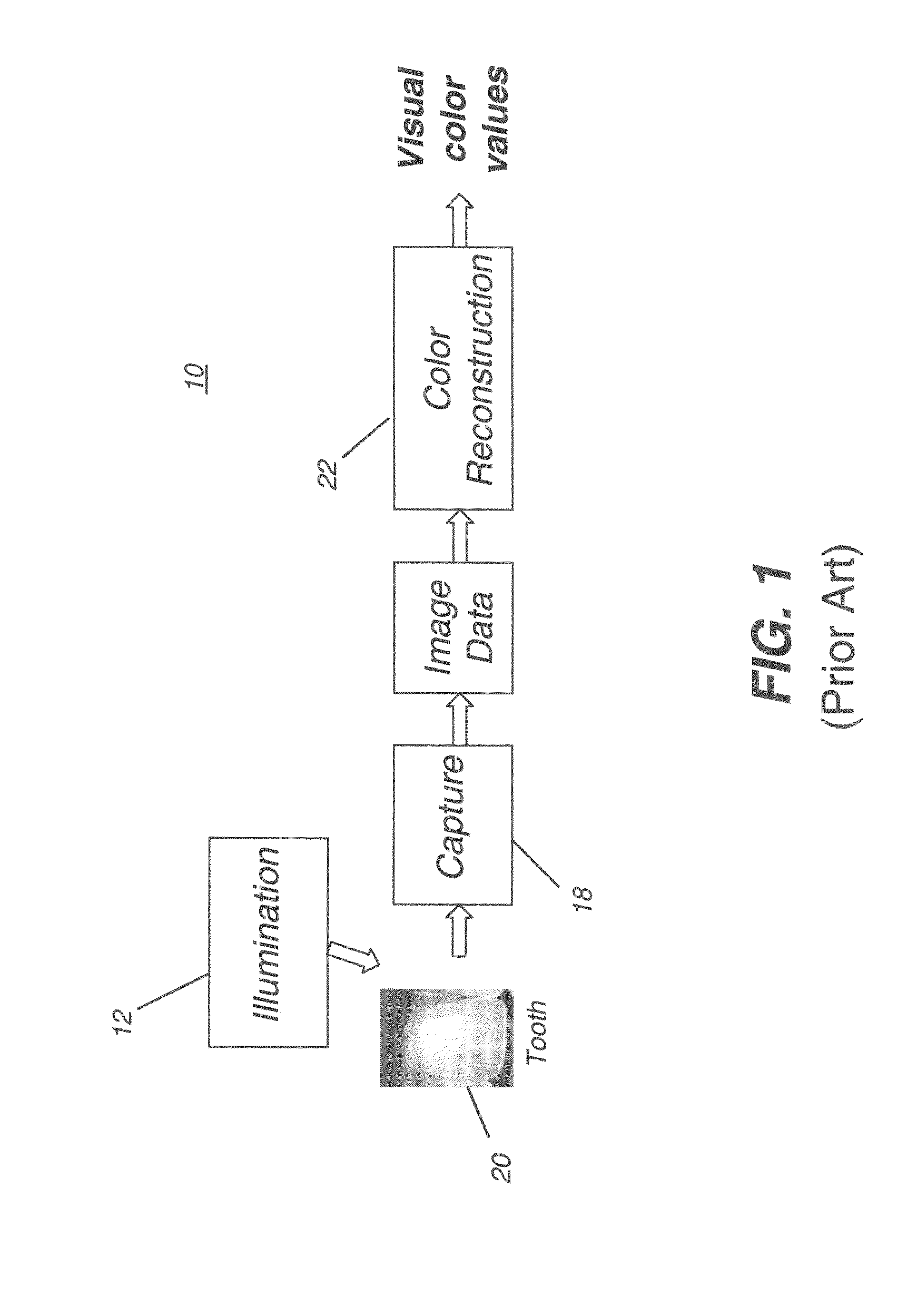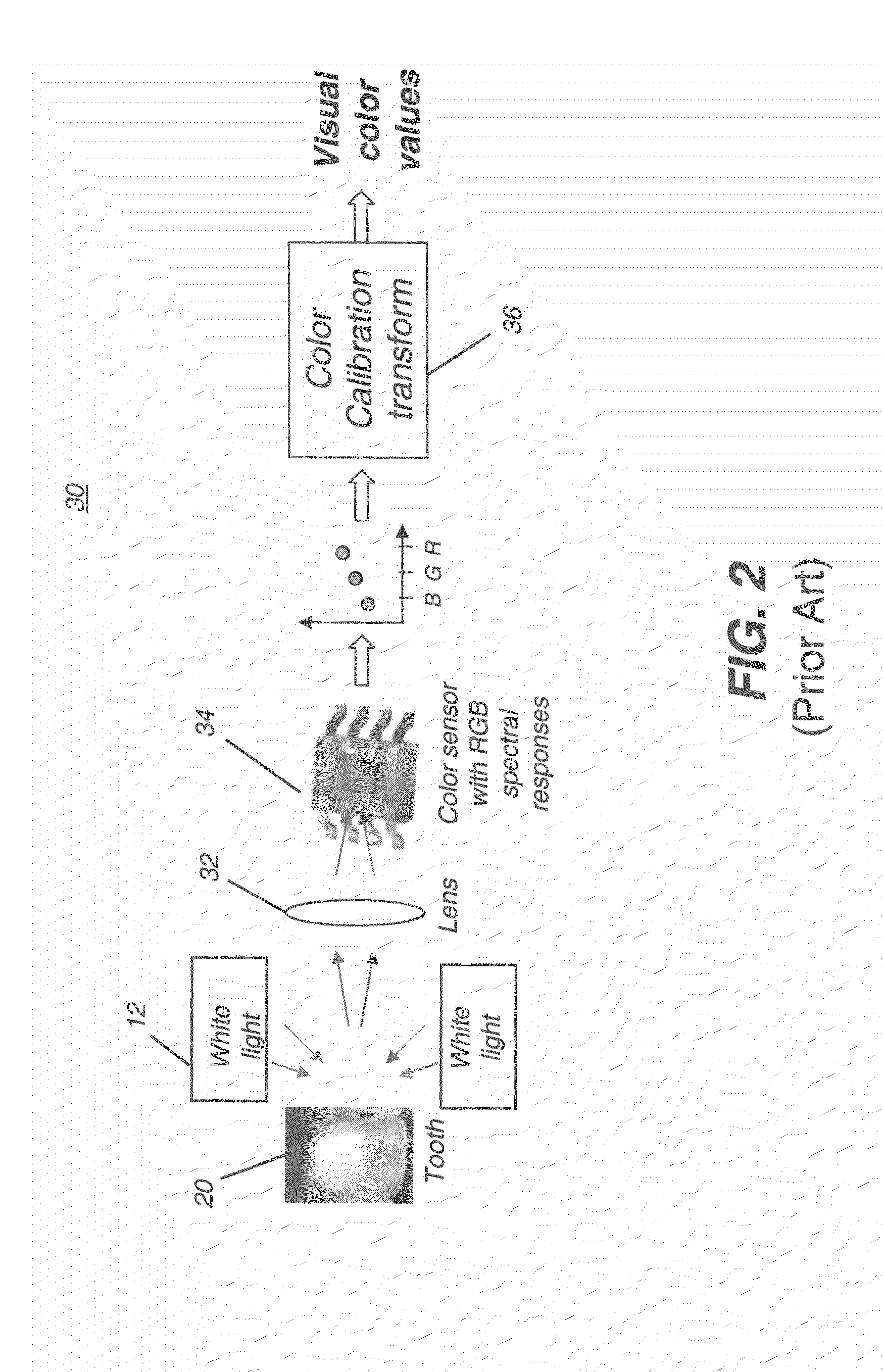Dental shade mapping
a technology for tooth color and mapping, applied in the field of dental color measurement, can solve the problems of inability to accurately map tooth color, difficulty in initial matching procedure, and a number of problems, and achieve the effect of promoting intraoral camera adaption and accurate mapping of tooth color
- Summary
- Abstract
- Description
- Claims
- Application Information
AI Technical Summary
Benefits of technology
Problems solved by technology
Method used
Image
Examples
Embodiment Construction
[0034]The following is a detailed description of the preferred embodiments of the invention, reference being made to the drawings in which the same reference numerals identify the same elements of structure in each of the several figures.
[0035]In the context of the present application, the term “narrow band” is used to describe LED or other illumination sources that emit most of their output light over a narrow range of wavelengths, such as 20-50 nm wide. The term “broadband” is used to describe a light sensor that exhibits high sensitivity to incident light over a wide wavelength range extending at least from about 400 nm to about 700 nm. Because this type of sensor responds to light but does not distinguish color, it is often referred to as a “monochrome” sensor or, somewhat inaccurately, as a “black-and-white” sensor.
[0036]In the context of the present application, the term “pixel”, for “pixel element”, has its common meaning as the term is understood to those skilled in the imag...
PUM
 Login to View More
Login to View More Abstract
Description
Claims
Application Information
 Login to View More
Login to View More - R&D
- Intellectual Property
- Life Sciences
- Materials
- Tech Scout
- Unparalleled Data Quality
- Higher Quality Content
- 60% Fewer Hallucinations
Browse by: Latest US Patents, China's latest patents, Technical Efficacy Thesaurus, Application Domain, Technology Topic, Popular Technical Reports.
© 2025 PatSnap. All rights reserved.Legal|Privacy policy|Modern Slavery Act Transparency Statement|Sitemap|About US| Contact US: help@patsnap.com



